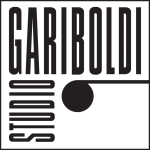February – April 2009
by Jan Hoet, Gand
Leblanc wrote one day that he was comparing “plastic aesthetics” to the “classic poetry that allows poetic liberty beyond its hard and fast rules”. He, in the same way linked (his) plastic work to music, the sound of which always depends on rhythm, on measure or on counterpoint but without however excluding the melody, like dance which considers in total nimbleness the dancers anatomy. He established a fourth link, this time with architecture, which even being subject to limitations imposed by functionality, does not forget the exterior form, aesthetics. Leblanc’s painting named “informal” is the result of a tension, of an interaction of severe rules and creative liberty. He maintained, in a certain sense, a very rigid system, that he had fixed, but was always trying to overcome it in a creative way. The flexibility of the limits of this painting was continually called upon, the limitations were modified in order to become possibility. It is this “provocatory” way of working that enabled Walter Leblanc to create a work which always disturbs and intrigues, in which the rhythm, the order, the play with the series and the light, and the human perception carry out a central role. I admire the perseverance, the motivation, the extreme logic with which Lebanc gave life with the passing of the years to this work, which fluctuates halfway into it between abstract and figurative. The sensitivity which emanates is practically unspeakable. The “hard-headedness” with which Leblanc gave form to his aspirations and his desires is exceptional. He succeeded in finding a balance between extremes such as “reason” and “sensibility”, “reflection” and “intuition”. Despite his striving for “purity”, Leblanc was never a purist. The way in which he was able to reconcile the severity of formal structures and the enthusiasm of free expression typical of poetry can therefore be called unique. In an indirect way, this artist has demonstrated that logic and orderliness do not have to be clinical and sterile. He was able to create a kind of ante litteram interactive art, in which spectator contribution, whether knowingly contributing or not to recreating the work, is determining. An artist who deserves to be placed in the pantheon of international art.






